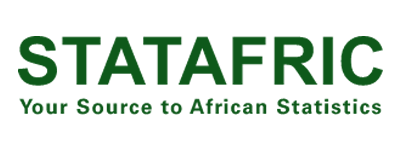STATAFRIC GRM Procedure
Introduction
This Grievance Redress Mechanism (GRM) enables individuals to raise issues, air their concerns or give feedback related to the implementation of three regional World Bank-funded projects managed by STATAFRIC, namely; (1) Harmonizing and Improving Statistics in West and Central Africa (HISWACA), (2) Harmonizing and Improving Statistics in West Africa (HISWA) and (3) Eastern Africa Regional Statistics Program-for Results (EARSPfR). STATAFRIC is committed to provide a structured, transparent and responsive system for addressing concerns, complaints, or grievances. All submissions will be treated with confidentiality and fairness, and complaints will be resolved in a timely and appropriate manner.
I. What is the GRM?
The World Bank defines a Grievance Redress Mechanism (GRM) as a formal system that enables individuals, communities, employees, and other stakeholders to raise concerns or complaints related to World Bank-supported projects, particularly regarding adverse effects on them, their community, or their environment.
Grievances may take the form of specific complaints about general concerns about project activities, environmental impacts, labor and working conditions, data privacy and risks of gender-based violence and harassment.
II. Who can use the GRM?
This GRM is accessible to project workers, consultants, service providers, meeting participants, partners and other stakeholders involved in project activities.
III. The GRM Process

The GRM consists of 6 steps:
- Reception: Grievances are lodged through five key channels: email, website form, phone call or WhatsApp, letter or in-person at a training or workshop.
- Acknowledgement, Assessment and Record: All complaints are acknowledged within 7 working days of receipt. The complainant will receive communication on the next steps and response timelines.
- Verification and Investigation: An appropriate investigation is conducted by the appropriate staff member or department assigned to handle the grievance.
- Resolution and Closure: A resolution is provided within 30 working days, with regular updates to the complainant.
- Appeal: If the complainant is unsatisfied, they can escalate the complaint to another African Union department, including the Ombudsperson and Mediation Services or the Staff Grievance Panel, whichever is appropriate.
- Feedback and Documentation: A Complainant Feedback Form is available for feedback on the GRM process. All grievances will be recorded in a GRM register, that will be regularly updated and maintained.
IV. How to Register a Complaint?
Complaints may be lodged by five key methods, including:
- Direct in-person reporting at meetings, training or workshops to the Safeguard Officer
- Website form below
- Email: Statafric-GRM@africanunion.org
- Phone/WhatsApp: +216 70 139 760
- Letteraddressed to:Safeguard Officer
PIT Office
Al Karama Holding Building, 2nd floor
Rue du lac d'Annecy
Les Berges du Lac 1
1053, Tunis-Tunisia
V. Complaint Form
Please fill out the form with as much detail as possible to help us understand and address your concern effectively. You may fill it out directly on the Form.
VI. Filing a procurement-related complaint
Interested parties may file procurement-related complaints about STATAFRIC World Bank funded projects. You should address the complaint to the STATAFRIC Project Procurement Team using the GRM email. Find detailed information in African Union Procurement Complaints.
When you make your complaint, please ensure that you provide as much relevant information as possible, such as:
- Your name and contact details
- Tender registration number and details
- Reason and nature of the complaint
- Supporting information or documentation
VII. Measures for Sexual Exploitation and Abuse (SEA) and Sexual Harassment (SEA/SH)
The AUC affirms the right of all individuals to be treated with dignity and respect and is committed to ensuring a workplace free from harassment, abuse, offensive behavior and discrimination as detailed in its Harassment Policy. This commitment is further reinforced through the World Bank Environmental and Social Framework (ESF).
Preventative Measures
The Project Implementation Team (PIT) has implemented the following preventative measures:
- Code of Conduct signed by all staff/consultants with SEA/SH prohibitions
- SEA/SH procedures integrated into GRM with survivor-centered approach
- Training sessions for staff and stakeholders
- Awareness campaigns with culturally appropriate materials
How to Register a SEA/SH Complaint
If the survivor gives consent, the PIT Safeguard Officer completes the SEA/SH Grievance Reporting Form, recording only name and contact details. This form is submitted to PIT Human Resources Officer for action and support services.
SEA/SH complaints may be lodged through:
- In-person to Safeguard Officer or HR
- Website form
- Email:Statafric-GRM@africanunion.org
- Phone/WhatsApp:+216 70 139 760









